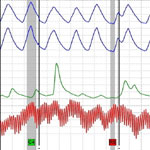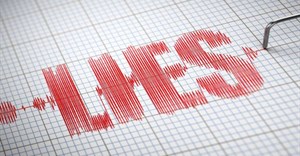
Subscribe & Follow
A failed polygraph does not justify dismissal

In Mustek, the employee was employed as a repairman for laptops and other electronic equipment. In March 2009, several laptops went missing from the company and the employee, along with all staff who worked in the area where the stolen laptops were housed, was subjected to a polygraph test. The six employees who failed the first polygraph test were subjected to another, and the four who failed the test again were dismissed. This suggests that at least two of the negative results were not reliable.
The way the polygraph works
At the CCMA hearing, Fanie Groeneveld, a director at the Polygraph Institute of South Africa, testified how a polygraph test works and also provided evidence as to its reliability as a determiner of truthfulness. His testimony was that in 250 studies throughout the world, the conclusion was that the test was 97% accurate. But accurate in what sense?
The court referred to an influential paper which describes the polygraph as "merely a device that measures and records electrophysiological activity". A polygraph does not directly measure deception or lying. Instead, it relies on the examiner drawing an inference from the physiological activity that it records. As Groeneveld explained, the test is based on the fear of being caught, the idea being that this fear will physically manifest when pertinent questions are posed. UK textbook, Phipson on Evidence, provides a more scathing description, characterising polygraph evidence as "in reality little different from a police officer giving evidence that during an interview the accused shuffled, stammered or sweated profusely".
An examination, not a test
The polygraph test is therefore not a purely objective test, such as a blood test, as it is sometimes painted. Rather it is an examination by an appropriately qualified expert who interprets results and provides the court with an expert opinion. Viewed in this light, polygraph evidence can be approached in the same way as the evidence of expert psychologists, pathologists, actuaries and the like. Unfortunately, not many agree that the discipline is foolproof and there remains a marked scepticism towards the method. The Professional Board of Psychology in South Africa has in the past even gone so far as to describe the polygraph in the media as "totally unreliable and not in the best interests of the public". For every study supporting its legitimacy, there is another dismissing it. The US Employee Polygraph Protection Act provides only narrow exceptions in permitting the use of a polygraph test by an employer and furthermore provides that strong safeguards must be in place when testing is done. The Supreme Court of Canada has gone all the way and does not accept polygraph tests as evidence of credibility. The idea behind the polygraph has been around since the 1700's and its validity remains in controversy. This makes it unlikely that our courts will ever accept polygraph evidence as being solely determinative. At best it will remain a factor to be considered alongside other evidence. Nevertheless, in South Africa, the polygraph test is used extensively in the investigation of misappropriation in the workplace, but employers must use it effectively.
Making the most of the polygraph
In view of the approach our courts take, the following needs to be considered by employers when conducting a polygraph examination. Firstly, the employee should consent to the test being done and how it works should be fully explained. Secondly, the employee should also be offered an interpreter if appropriate. Thirdly, the examiner must be a qualified expert and the examination must take place under strict conditions with repeat tests conducted if possible. Putting these measures in place, in the court's eyes, lends legitimacy to the examination. Bear in mind that the court will disregard the results of improperly conducted tests.
In our view, an effective polygraph examination is a means to an end, not an end in itself. It should form part of the investigative process, perhaps narrowing down suspects and identifying witnesses or evidence. The examiner must therefore be made acutely aware of all the relevant circumstances so that questions can be tailored appropriately. Furthermore, examiners must later be available to testify as expert witnesses as to the results and how the examination was conducted. This means that an employer's choice of examiner is critical. The examiner not only needs to be technically qualified, but should ideally be an experienced and respected expert capable of withstanding the rigors of cross-examination. Finally, the results of the test must be fairly communicated to the accused employee. It is not fair, for instance, to tell the employee that the test has proved them to be a liar.
Further evidence will always be needed in addition to polygraph results which will only ever be regarded as supporting of other evidence of misconduct. Against this backdrop, employers are warned that a failed polygraph will never be enough on its own to justify dismissal.








